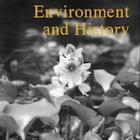Tachibana, Setsu, and Charles Watkins. “Botanical Transculturation: Japanese and British Knowledge and Understanding of Aucuba japonica and Larix leptolepis 1700-1920.” Environment and History 16, no. 1 (Feb. 2010): 43–71. doi:10.3197/096734010X485292. Republished by the Environment & Society Portal, Multimedia Library. http://www.environmentandsociety.org/node/7598.
Two species, Aucuba japonica and Larix leptolepis, introduced from Japan to Britain provide examples of different types of transculturation. We demonstrate the complexity of the interchange of Japanese and European knowledge of natural history in the late eighteenth and early nineteenth centuries. The importance of this exchange and interaction was consciously underplayed by those recounting the discovery of plants by European collectors. We identify different modes of transculturation. Initially, most introduced plants are celebrated as exotic but after a period of testing the most popular plants become culturally assimilated. Some plants may, at a later stage, become physically hybridised. The hardiness of the plants was a crucial factor for successful cultural assimilation. In Britain, Aucuba japonica was initially celebrated as an exotic but over time became culturally assimilated, particularly in town and city gardens. Larix leptolepis also became assimilated through its economic timber value and became physically hybridised with the European larch in Scotland to produce Larix eurolepis.
— Text from The White Horse Press website
All rights reserved. © 2010 The White Horse Press


